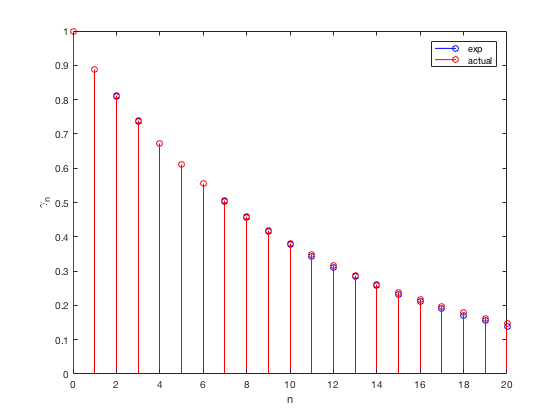Let $ Z_t$ be a weakly stationary stochastic (WSS) process of order $p$ modeled as an autoregressive model.
$Z_t = \phi_{1} Z_{t-1} + \phi_{2} Z_{t-2} + \phi_{p} Z_{t-p} + a_t $ .
where $a_t$ is the random component.
One learns from most books on Time Series Analysis that to calculate the autcorrelation function of $Z_t$, one must multiply $Z_t$ by $Z_{t-j}$ and, after that, the expectation of the product should be calculated. The result would be:
$\mathbb{E}(Z_t.Z_{t-j}) = \phi_{1}.\mathbb{E}(Z_{t-1}.Z_{t-j}) + \phi_{2}.\mathbb{E}(Z_{t-2}.Z_{t-j}) + ... + \phi_{p}.\mathbb{E}(Z_{t-p}.Z_{t-j}) + \phi_{1}.\mathbb{E}(a_{t}.Z_{t-j}) $
Since $Z_{t-j}$ only correlates to the noise until $a_{t-j}$, $\mathbb{E}(a_{t}.Z_{t-j}) = 0, j > 0$, one could simply the equation above as the following:
$\gamma_j = \phi_1.\gamma_{j-1} + \phi_2.\gamma_{j-2} + ... + \phi_p.\gamma_{j-p}, j > 0$
where $\gamma_j$ is the covariance of $Z_t$ and $Z_{t-j}$.
Although this seems simple, I have been having trouble trying to show the result for a numerical example. For instance, let a known WSS autoregressive model $Y_t$be:
$Y_t = 0.8 Y_{t-1} + 0.6 Y_{t-2} + a_t $.
If $j = 1$, then $Y_{t-j}$ = $Y_{t-1} = 0.8 Y_{t-2} + 0.6 Y_{t-3} + a_{t-1} $.
If I multiply $Y_t$ by $Y_{t-1}$, and then take the expected value, I'd be calculating the covariance of $Y_t$ and its first lag, $Y_{t-1}$:
$\gamma_j = cov(Y_t,Y_{t-1})$
In my numerical example, that would be:
$\mathbb{E}(Y_t . Y_{t-1}) = 0.64 \mathbb{E}(Y_{t-1}.Y_{t-2}) + 0.48 \mathbb{E}(Y_{t-2}.Y_{t-2}) + 0.8 \mathbb{E}(Y_{t-2}.a_t) + 0.48\mathbb{E}(Y_{t-1}.Y_{t-3}) + 0.36\mathbb{E}(Y_{t-2}.Y_{t-3}) + 0.6 \mathbb{E}(Y_{t-3}.a_t) + 0.8\mathbb{E}(Z_{t-1}.a_{t-1}) + 0.6\mathbb{E}(Z_{t-2}.a_{t-1}) + \mathbb{E}(a_{t}.a_{t-1})$
Simplifying the equation above, one gets:
$\mathbb{E}(Y_t . Y_{t-1}) = 0.64 \mathbb{E}(Y_{t-1}.Y_{t-2}) + 0.48 \mathbb{E}(Y_{t-2}.Y_{t-2}) + 0.48\mathbb{E}(Y_{t-1}.Y_{t-3}) + 0.36\mathbb{E}(Y_{t-2}.Y_{t-3}) + 0.8\mathbb{E}(Z_{t-1}.a_{t-1})$
How do I proceed from here?
Knowing this is assumed to be a WSS process, I know that the covariance function relies upon only the lag $j$.
Can I then say that $\mathbb{E}(Y_{t-2}.Y_{t-3}) = \mathbb{E}(Y_{t-1}.Y_{t-2})$ since $2-3 = 1-2$?
I know that the correlation of $(Y_{t-2},Y_{t-2})$ would be one, but the covariance will not necessarily be.
Edit: As @gunes rightly pointed out, the correlation of $\mathbb{E}(Y_{t-1}.Y_{t-2})$ will not be one. What I should've written was that the correlation of $(Y_{t-2},Y_{t-2})$ will be one, but its covariance won't.

